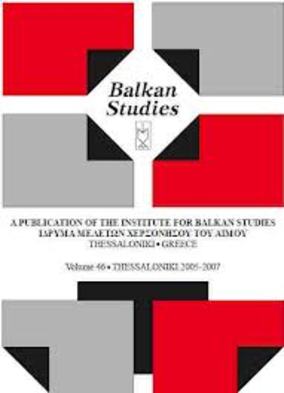Die Panhymnitos
Part of : Balkan studies : biannual publication of the Institute for Balkan Studies ; Vol.29, No.2, 1988, pages 199-237
Issue:
Pages:
199-237
Parallel Title:
The Panhymnitos
Section Title:
Articles
Author:
Abstract:
This study examines the question of what is really meant by the term “Thracian”in so-called “Thracian art”. If one divides the various ancient worksfound on modern Bulgarian territory—chiefly works of miniature art—intogroups, the first group may be seen to comprise Iranian art, the second Ural-Altaic art, and. the third ancient Greek art (this is the largest group in allbranches of art, including miniature art, metalwork, sculpture, and architecture);the fourth group consists of works by untutored artists—one might almostcall them crude—and it is these which are the genuinely Thracian works.Ancient Greek art gradually acquired its Graeco-Roman character inThrace too and was thus the most obvious factor in the Thracians’ Hellénisation.When it came to an end, the ancient Graeco-Roman world left a hostof early Christian and Byzantine monuments on modern Bulgarian territory.But the presence is attested not of ancient Greek and mediaeval paideia alone,for modern Greek paideia is also present in Bulgaria. Our neighbours mustnot forget this, and rather than misinterpreting the works of Greek paideiaand art of all periods, they should celebrate them, as the composer of theAcathistus Hymn celebrates the Virgin Mary. Collections of Byzantine iconsof the Virgin and copies, of inscriptions in Greek—not Cyrillic—letters, areto be seen plenty in modern Bulga.ria.
Subject:
Subject (LC):
Notes:
Το άρθρο περιέχει εικόνες στο τέλος του




